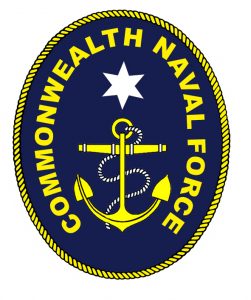- Author
- Swinden, Greg
- Subjects
- History - general, History - pre-Federation
- Tags
-
- RAN Ships
- None noted.
- Publication
- June 2011 edition of the Naval Historical Review (all rights reserved)
Firstly let me explain that the Australasian Naval Forces (ANF) and the Commonwealth Naval Forces (CNF), and vice versa, are not the same thing. Following Federation in 1901 the various state navies[1] were combined into the Commonwealth Naval Forces, on 1 March 1901, with Captain (later Rear Admiral) William Rooke Creswell in command. This amalgamation didn’t not happen overnight and it was not until 1904-05 that any semblance of order was achieved.
Whilst Creswell was busy getting the naval affairs of Australia in order, having inherited a rag tag fleet of different vessels and a conglomeration of varied personnel from the state navies, the naval defence of Australia rested very much with the Royal Navy and its squadron of ships based on the Australia Station[2]. Royal Navy ships had been based in Sydney since the days of the First Fleet and warships were permanently based in Australian waters since the 1820’s and remained so until 1913. Even the creation of the various state navies had not lessened this need; as the state naval vessels were considered only suitable for harbour and close coastal defence.
Creswell was supported by some forward looking politicians including Prime Ministers Deakin and Fisher who supported the concept of an independent Australian Navy and the Government commenced ordering purpose built vessels for the new navy. The first of the CNF’s new vessels were the Torpedo Boat Destroyers Parramatta and Yarra which were built in England and arrived in Australian waters in late 1910. It was the CNF that was subsequently granted the title Royal Australian Navy on 10 July 1911. Following on from the arrival of the two destroyers was the creation of the Australian Fleet Unit consisting of a Battle Cruiser Australia and two cruisers Melbourne and Sydney along with four more destroyers and two submarines. A third cruiser (Brisbane) was also planned to be constructed in Australia. Additionally a number of Royal Navy warships such as the cruisers Encounter, Pioneer, Psyche and survey vessel Fantome were loaned or transferred to the new navy.
It was, however, not just the acquisition of new ships that occupied the thoughts of our early naval officers and administrators. The personnel to man the new ships were equally important. Some officers and men had been transferred from the old state navies and a number of ex Royal Navy personnel had also joined the CNF. A modest recruiting program for the CNF had begun and a Boys Training Ship and a Naval College were planned but the reality was that these were several years in the future. As part of the program to train Australians to be naval personnel, and possibly in the future alleviate the shortage of trained men, the ANF was created.
Following the 1902 Colonial Conference in London it was agreed that Australians, and New Zealanders, would be permitted to enter the Royal Navy for training[3]. This would eventually form a core of trained men who could be accessed by the new Australian navy.

John Wilkins
The ANF was formed and recruiting started in early May 1904 and 15 year old schoolboy John Garfield Clubb[4] of Balmain, NSW was the first recruit and issued ANF service number 1. Over the next ten years another 1795 boys and men were enlisted in the ANF from both Australia and New Zealand. These men were effectively Royal Navy ratings who signed on for an initial period of five years service[5] and served in the Royal Navy ships of the Australian Squadron.
In January/February 1913 the majority of ANF personnel still serving in the Royal Navy (i.e. they still had a portion of their five year engagement to complete) were formally transferred to the RAN and many were allocated as commissioning crews to the newly built ships and submarines of the RAN. These men were allocated service numbers in the RAN Service number 7000 series and approximately 400 men were transferred to the RAN[6]. For example Able Seaman Harold ‘Lofty’ Batt (ANF 1344) from Palmerston North, New Zealand was allocated service number 7442 and became commissioning crew of HMAS Australia. He had joined the Royal Navy in July 1909 as a Boy 2nd Class at Lyttleton, New Zealand and was allocated to HMS Pioneer. He served in the RAN until 1919[7].




